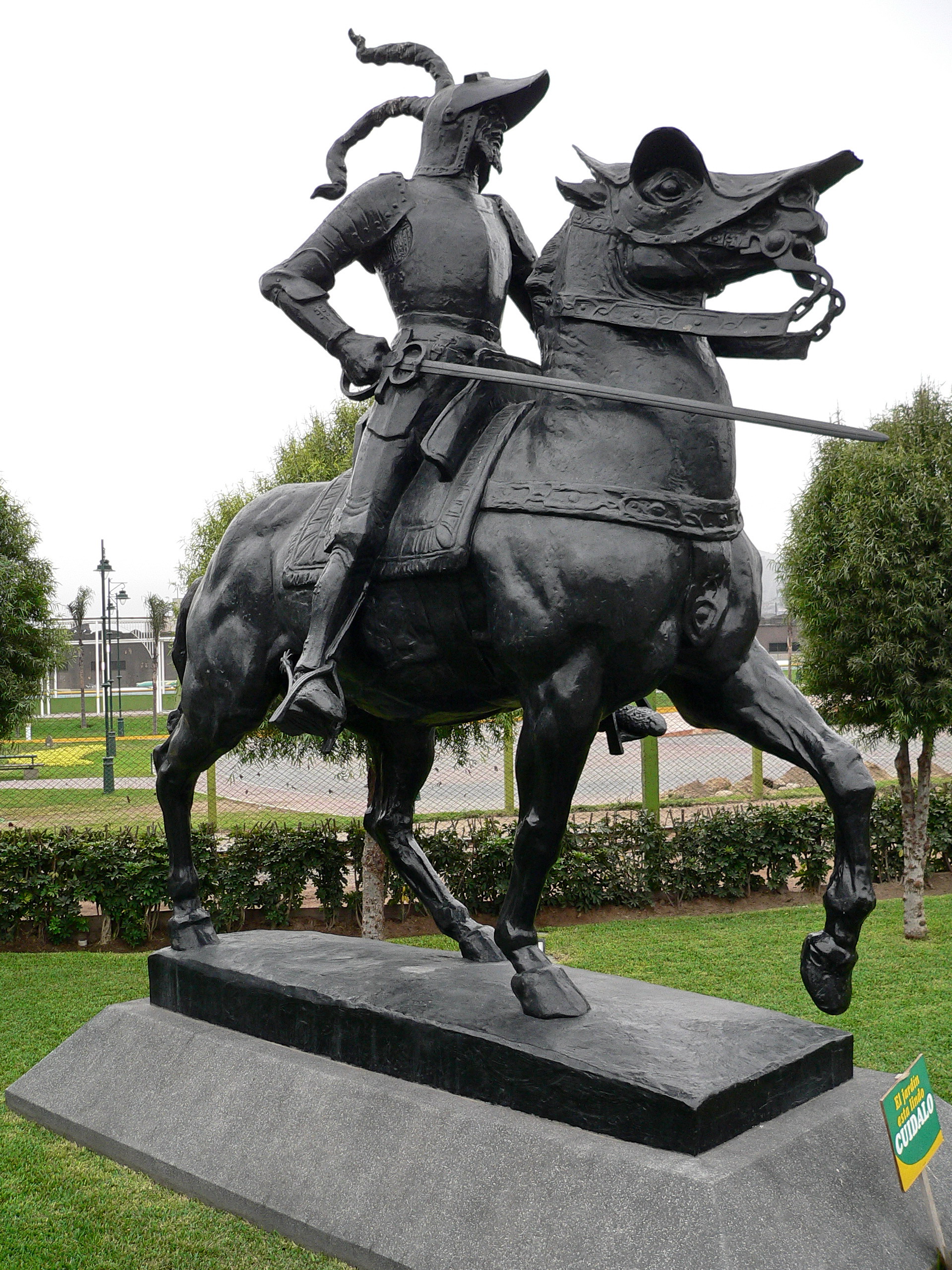Home | Pizarro, Francisco
- CountryPeru
- Town:Lima
-
Year of creation:1935
- Rider(s):Pizarro, Francisco
(c. 1471 or 1476 –1541) was born in Trujillo, Spain, as the illegitimate son of an infantry colonel. He grew up illiterate. Pizarro sailed from Spain to Cartagena in the New World in 1509, and accompanied Balboa in 1513 to the Pacific. He was rewarded for his role in the arrest of Balboa with the positions of mayor and magistrate in Panama City, serving there from 1519 to 1523. Reports of Peru’s riches and Cortés’s success in Mexico tantalized Pizarro and he undertook in 1524 and in 1526 two expeditions to conquer the Incan Empire. Both failed as a result of native hostilities, bad weather, and lack of provisions. In 1528, he reached northern Peru and found the natives rich with precious metals. This discovery gave Pizarro the motivation to plan a new expedition to conquer Peru. Pizarro returned to Spain, where he not only received from King Charles I a license for the proposed expedition but also considerable authority over any lands conquered. In 1530 the expedition left Panama. Pizarro captured Inca Emperor Atahualpa in1532. A ransom for the Emperor was offered and Atahualpa filled a room with gold. However Pizarro charged him with various crimes and executed Atahualpa in 1533, much to the opposition of his associates who thought the conquistador was overstepping his authority. The same year, Pizarro entered the Incan capital of Cuzco, completing the conquest of Peru. In 1535, Pizarro founded the city of Lima, a project he considered his greatest achievement. Quarrels between Pizarro and his longtime comrade-in-arms Diego Almagro culminated in the capture and execution of Almagro, whose embittered son assassinated Pizarro in Lima in 1541.
- Sculptor(s):Rumsey, Charles Cary
(1879 –1922) was an American sculptor. He stayed in Paris for two years to serve as an apprentice to one of the most prominent American sculptors abroad, sculptor Paul Weyland Bartlett. Horses were nearly a mania with the Rumseys. For not smoking or drinking before his 21st birthday, the young artist was rewarded with a fine Kentucky thoroughbred which was led into the family dining room as a surprise. Apart from sculpture, horses were the great passion of his life. A superb rider, a world-class polo champion and member of the foremost teams, he won many awards throughout the United States. When he returned to France in 1917-18 during the war, it was as an officer in the 25th Cavalry Division of the United States Army. It was with immense sadness that he witnessed the failure and decline of the horse as a military factor overpowered by the development of mechanical forces.
- Original in:Buffalo, US
See original.
An equestrian statue by Charles Cary Rumsey, portraying Francisco Pizarro, was erected in Lima, Peru in 1935. It is a larger copy of one made in plaster for the Panama Pacific Exposition in San Francisco in 1915. The small original in bronze stands in front of the Albright-Knox Art Gallery in Buffalo (US). Another copy is located in the birthplace of Pizarro: Trujillo, in Spain.
From the very beginning, the monument in Lima caused conflict. Conservatives considered it appropriate to commemorate the founder of the city and to celebrate the colonial roots of contemporary Peru. They likened the Spanish conquest of Peru to the Roman conquest of Spain, and argued that Peru in its essence was Spanish. Progressives viewed the monument as a symbol of colonialism and oppression, and argued that Lima should not honour the destroyer of the Inca culture; an oppressor and murderer of Peru’s indigenous people. They viewed Peru as a nation rooted in indigenous culture, which had survived centuries of efforts to eradicate it.
In 2003, after years of lobbying by an indigenous and mixed-raced majority requesting the removal of the statue of Pizarro, the mayor of Lima approved the transfer of the statue to another location: a square adjacent to the country’s Government Palace. The statue was later relocated to a remote corner of a park that was developed to protect remnants of the historic city wall. The statue also has been deprived of its large and commanding base – which it enjoyed in its previous two locations– and has been demoted to a pedestrian level. Although the statue still is publicly displayed, it is clear that Pizarro has been exiled to an insignificant spot outside the boundaries of colonial Lima.
Photo by Manuel Olaechea






